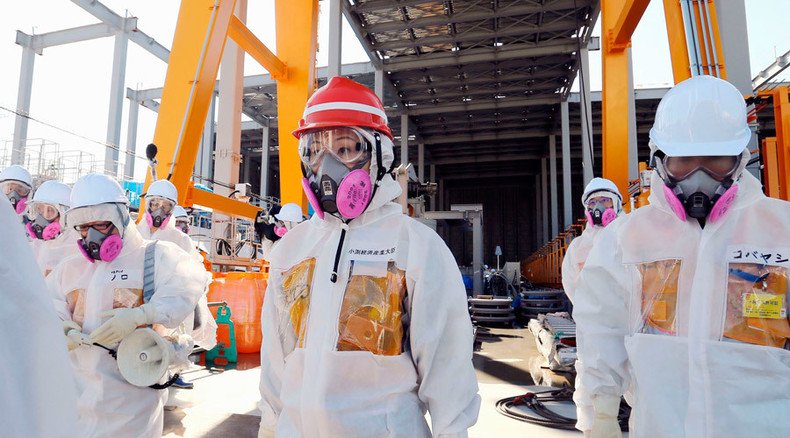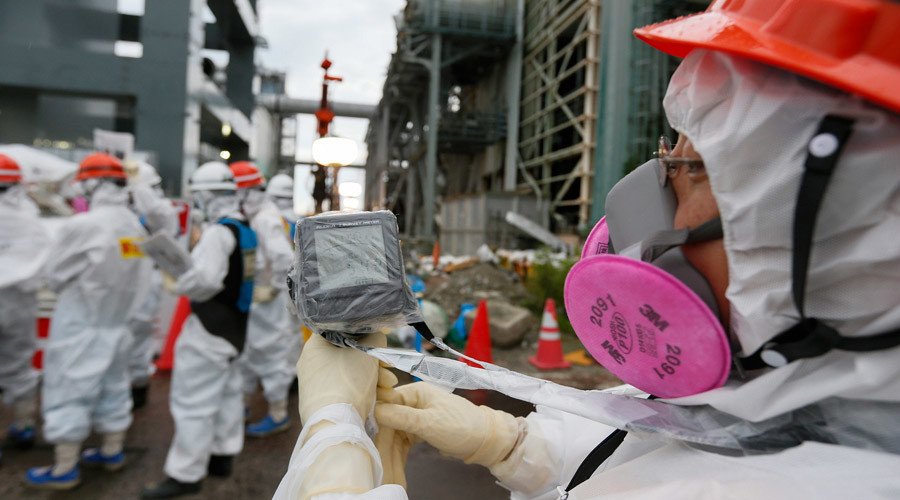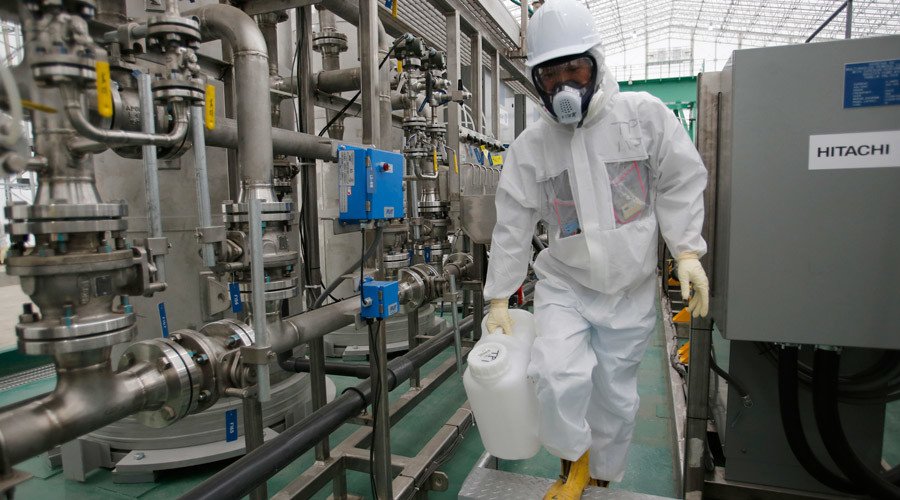‘Japanese govt creates illusion of normality at Fukushima’

Japanese authorities made a troubling decision to let people to return to their houses in the zone of the Fukushima disaster as there is still much radioactive contamination in the region, Kevin Kamps of Beyond Nuclear told RT.
READ MORE: Fukushima disaster was preventable, new study claims
RT: Would you approve of the decision of the Japanese authorities to let people return to their houses in the zone of the Fukushima disaster?
Kevin Kamps: It is a very troubling decision, because there is radioactive contamination still throughout the countryside. In fact they just announced this time to move back to Naraha under threat of cutting people off from their compensation payments from Tokyo Electric Power Company [TEPCO]. Ironically, just days later, Typhoon Etau which had with it record breaking floods redistributed the radioactivity. Not only did bags of radioactive waste wash out the sea and down rivers, but the entire landscape- areas that had not been decontaminated – that contamination then floated with the water down mountain sides, downhill into areas that had been contaminated like Naraha, but also into areas that had not been contaminated before. So this radioactivity, as we saw, as we still see with the Chernobyl nuclear catastrophe – the radioactivity from Fukushima is moving in the environment. So it is a very troubling decision by the Japanese government to try to create the illusion of normality when there is so much radioactive contamination still in the environment.
RT: How long-lasting would the effect of the disaster be?
KK: It depends on the radioactive poison that you’re speaking about specifically. So, for example, radioactive Cesium-137 has a half-life of 30 years. You have to multiply it by 10 or 20 to get the hazardous persistence. So that is 300 to 600 years of hazard with radioactive Cesium-137. Strontium-90 is about the same – 300 to 600 years of radioactive hazard. And then you have radioactive poisons that are deadly virtually forever more into the future. For example, Plutonium-239 a half-life of 24,000 years – that is a radioactive hazard of 240,000 if not 480,000 years into the future.

RT: How dangerous is the area right now?
KK: Unfortunately we don’t have much information yet after these record breaking floods just last week, which in a very big way has moved radioactivity to new places in the environment, or has re-contaminated places previously decontaminated supposedly. So there is so much that we don’t know. Certainly there have to be very careful steps taken to measure the radioactivity in the environment. Any pronouncements by local mayors or even the Japanese government that they are only detecting so much radioactivity one meter above the ground - it misses the point in a very big way. Radioactive cesium, strontium, tritium, and other radioactive poisons can enter the food supply, and people can eat the radioactivity or drink it in their drinking water. Very careful measures to guard against the contamination of the food supply and the drinking water supply have to be taken. And I don’t know if that is happening in all places right now.
RT: There are claims that TEPCO is still concealing some important information about the Fukushima tragedy. Would you say that this could be true?
KK: Absolutely, TEPCO has been caught so many times even before this catastrophe began, but certainly after the catastrophe. Just to give one example: this past February, 2015 Tokyo Electric finally announced, let the public know, that every time it rained at the site- and they had some major typhoons hit that site in the last four and a half years - the radioactivity levels in the ditches went up very significantly. Very high level radioactive water was flowing down these ditches. It turned out that there was a very badly contaminated spot on top of the Unit 2 reactor building, which suffered very large scale radioactivity releases during the catastrophe. They were simply letting this water flow down the ditches and into the ocean. They kept that quiet not for days, or for weeks, or for months, but for years. Unfortunately, TEPCO controls a lot of the information coming out of the Fukushima Daiichi Nuclear Power Plant Station. Of course it would be in their interest to try to keep things quiet that are bad for their public relations. Fortunately, this truth finally came out. But you have to wonder - how many more things are they hiding.

‘Disaster by design’
The nuclear plant was doomed from the very beginning for a number of reasons, including TEPCO’s underestimation of the possibility of a tsunami in the area, says Costas Synolakis of the Tsunami Research Center, University of Southern California.
There were two major failures of TEPCO which eventually led to the disaster, he told RT.
“First of all, it starts back when the plant was built in the 1960’s. If you can believe it – there was a coastal cliff at that location. They took it down (it was 30 meters high) to minus 4 meters, so that… it would be easier to put the foundation for the nuclear power plant plus also to save on cost. Obviously back in the 1960’s they didn’t think about tsunamis even though tsunamis happened in Japan all the time…So number two – they didn’t consider the historic reports [about tsunamis],” he said.
“TEPCO had clear chances all along the way; they were warned by Japanese seismologists and Japanese scientists that there was evidence of big tsunamis in the area... What is very serious, from my point of view, is the rationalizations that TEPCO tried to do in the beginning. At one point they were writing in one report that their analysis was conservative. Conservative means that they had overestimated the tsunami – in fact they had underestimated the tsunami. A very famous social scientist in the US – his name is Dennis Mileti, would call this ‘disaster by design’, meaning that it was just there waiting to happen.”
LISTEN MORE:
The statements, views and opinions expressed in this column are solely those of the author and do not necessarily represent those of RT.












